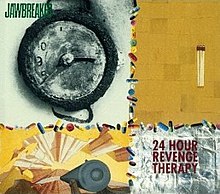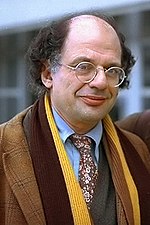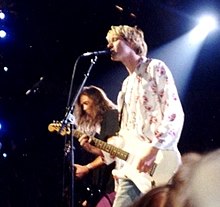Emo is a music genre characterized by emotional, often confessional lyrics. It emerged as a style of hardcore punk and post-hardcore from the mid-1980s Washington, D.C. hardcore scene, where it was known as emotional hardcore or emocore. The bands Rites of Spring and Embrace, among others, pioneered the genre. In the early-to-mid 1990s, emo was adopted and reinvented by alternative rock, indie rock, punk rock, and pop-punk bands, including Sunny Day Real Estate, Jawbreaker, Cap'n Jazz, and Jimmy Eat World. By the mid-1990s, Braid, the Promise Ring, and the Get Up Kids emerged from Midwest emo, and several independent record labels began to specialize in the genre. Meanwhile, screamo, a more aggressive style of emo using screamed vocals, also emerged, pioneered by the San Diego bands Heroin and Antioch Arrow. Screamo achieved mainstream success in the 2000s with bands like Hawthorne Heights, Silverstein, Story of the Year, Thursday, the Used, and Underoath.

In Utero is the third and final studio album by the American rock band Nirvana, released on September 21, 1993, by DGC Records. After breaking into the mainstream with their previous album, Nevermind (1991), Nirvana hired Steve Albini to record In Utero, seeking a more complex, abrasive sound that was reminiscent of their work prior to Nevermind. Although the singer and primary songwriter Kurt Cobain claimed that the album was "very impersonal", many of its songs contain heavy allusions to his personal life and struggles, expressing feelings of angst that were prevalent on Nevermind.

The Jesus Lizard is an American rock band formed in 1987 in Austin, Texas by vocalist David Yow, guitarist Duane Denison and bassist David Wm. Sims. They relocated to Chicago, Illinois, in 1989, where they found kindred spirits in recording engineer Steve Albini and Touch and Go Records. With the addition of drummer Mac McNeilly, they began performing live, eventually attracting an international audience with their powerful live show.

Jawbreaker is an American punk rock band that was active from 1986 to 1996, and again since 2017. The band is considered to be extremely influential to the 1990s emo and punk genre with their "poetic take on hardcore." Their influence on the punk scene has led some critics to label Jawbreaker as the best punk rock band of the 1990s.

Static Prevails is the second studio album by American rock band Jimmy Eat World, released on July 23, 1996, through Capitol Records. Following the release of the band's self-titled debut album (1994), they signed to Capitol in mid-1995 for further releases. Carrier member Rick Burch replaced bassist Mitchel Porter, who left to become a Mormon missionary. Recorded at Sound City in Los Angeles, California, and at Big Fish, in Encinitas, California, Wes Kidd, Mark Trombino, and Jimmy Eat World acted as producers for the album.

Clarity is the third studio album by American rock band Jimmy Eat World. It was released on February 23, 1999, through Capitol Records, with which Jimmy Eat World clashed several times while recording their second studio album Static Prevails (1996). The band recorded a follow-up with producer Mark Trombino in May and June 1998, and were free to make it however they wanted without interference from Capitol. The recording sessions began at Sound City in Van Nuys, California, before moving to Clear Lake Audio in North Hollywood, California. Clarity, which is described as an emo, pop punk, and punk rock release, marked the beginning of frontman Jim Adkins' tenure as the band's main vocalist, taking over from guitarist Tom Linton.

Orange Rhyming Dictionary is the debut studio album by American rock band Jets to Brazil, released October 27, 1998 on Jade Tree. Following the break up of Jawbreaker, frontman Blake Schwarzenbach moved to New York City, and formed Jets to Brazil with bassist Jeremy Chatelain and drummer Chris Daly. J. Robbins was drafted in to produce the band's debut album at Easley Studios in Memphis, Tennessee. With Orange Rhyming Dictionary, Schwarzenbach moved away from the punk rock sound of Jawbreaker into indie rock and post-hardcore.

Alexander Blake Schwarzenbach is an American musician. He is the singer and guitarist of the San Francisco based band Jawbreaker, and was also a member of Jets to Brazil (1997–2003), The Thorns of Life (2008–2009), and forgetters (2009–2013). Although experiencing little mainstream success himself, Schwarzenbach and groups he has been a member of have influenced a variety of musical groups.

Bad Scene, Everyone's Fault is a tribute album to the band Jawbreaker, released in 2003 by Dying Wish Records. It includes bands of the post-hardcore, punk rock, pop punk, and emo genres covering Jawbreaker songs. The album is named after a song on Jawbreaker's 1995 album Dear You.
A boxcar is an enclosed railroad car for carrying general freight.
"Frances Farmer Will Have Her Revenge on Seattle" is a song by the American rock band Nirvana, written by vocalist and guitarist Kurt Cobain. It is the fifth song on their third and final studio album, In Utero, released in September 1993.
Gouge Away is an American hardcore punk band based in Florida that formed in 2012. The band is influenced by post-hardcore and noise rock bands such as Pixies, The Jesus Lizard, Fugazi, Unwound, the Plot to Blow Up the Eiffel Tower and Nirvana. Gouge Away released its debut album , Dies in 2016 to underground acclaim, and released its second album Burnt Sugar through Deathwish Inc. in 2018.
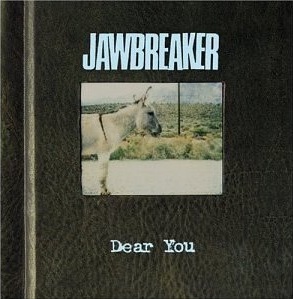
Dear You is the fourth studio album by American punk rock band Jawbreaker, released on September 12, 1995, through DGC Records. While promoting their third studio album 24 Hour Revenge Therapy (1994), Jawbreaker was approached by a representative from Geffen Records. After securing management, they had meetings with various label representatives, before circling back to Geffen. Eventually, they signed to them and started recording their major label debut at Fantasy Studios in Berkeley, California, with producer Rob Cavallo. While bassist Chris Bauermeister and drummer Adam Pfahler recorded their respective parts within a few days, frontman Blake Schwarzenbach did his parts over six weeks in February and March 1995.
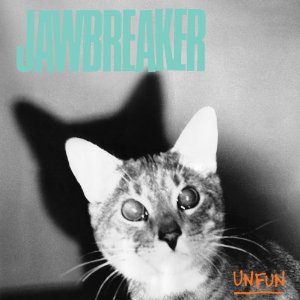
Unfun is the debut studio album by American punk rock band Jawbreaker, released in May 1990 through Shredder Records. The band members met one another at university and began rehearsing together in late 1986. After going through several names and a lineup change, Jawbreaker sent a copy of "Shield Your Eyes" to punk publication Maximum Rocknroll, which later caught the attention of Shredder Records founder Mel Cheplowitz. Following the release of the Whack & Blite EP and the "Busy" single, members of the band returned to education. While this was occurring, they wrote material that later appeared on their debut album, which was then recorded with producer Richard Andrews in January and February 1990 at Radio Tokyo in Venice, California.

Bivouac is the second studio album by American punk rock band Jawbreaker, released through Tupelo Recording Company and The Communion Label on December 1, 1992. While promoting their debut album, Unfun (1990), on a ten-week tour of the United States, the band had new material that they wished to work on through their shows. They ended up breaking up after the tour's conclusion, though they later regrouped in 1991 to write new songs. From June 1991, they wrote material and practiced several times a week in the lead-up to recording sessions in October 1991. The sessions were held at Razor's Edge in San Francisco, California, with Jawbreaker, Billy Anderson, Mike Morasky, and Jonathan Burnside all getting producer credit. Categorized as an emo, punk rock, and pop-punk release, it had elements of the work of Helmet, Naked Raygun, and early Smashing Pumpkins, and took influence from the Midwestern and Washington, D.C. post-punk scenes.

Steel Pole Bath Tub is an American rock band, formed in 1986 in Bozeman, Montana, United States, by Mike Morasky (guitar/vocals) and Dale Flattum (bass/vocals).
The Thorns of Life were a punk rock band from Brooklyn, New York. In October 2008, Blake Schwarzenbach, formerly of Jets to Brazil and Jawbreaker, revealed that he had started writing music for an "as-yet-unnamed group" with the drummer Aaron Cometbus and the bass guitarist Daniela Sea, formerly of the Gr'ups and Cypher in the Snow, but best known for a recurring role on television's The L Word. The name may come from Percy Bysshe Shelley whose poem Ode to the West Wind has the line "I fall upon the thorns of life! I bleed!".
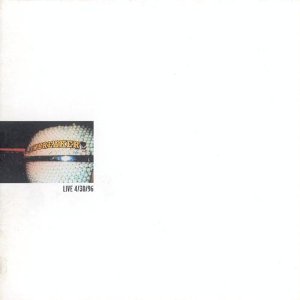
Live 4/30/96 is a live album by American punk rock band Jawbreaker. It contains three songs that were never released as studio recordings. The show was recorded at the Warfield in the band's native San Francisco.
The discography of Jawbreaker, an American punk rock band active from 1986 to 1996, and again since 2017, consists of four studio albums, one live album, one compilation album, two extended plays (EPs) and eight singles. The group has also contributed multiple songs to various compilations over the years, both during their time together as a band and posthumously.
Forgetters are a punk rock band from Brooklyn, New York. In August 2009, shortly after the breakup of the Thorns of Life, Blake Schwarzenbach announced his involvement in a new band, forgetters, with original Against Me! drummer Kevin Mahon and Caroline Paquita.
